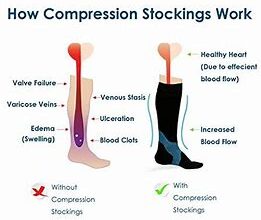Mathematics is a crucial part of a child’s early development, and it is important to identify and address any weaknesses in their math skills. One way to do this is by using an interactive mathematics test that is targeted for children aged 4-10. Such a test not only takes into account the different topics that children need to cover in math, but also requires them to understand and apply these concepts in a fun and engaging way.
This interactive math test is designed to assess a child’s ability in areas such as addition, subtraction, problem-solving, number sequences, and graph understanding, among others. By incorporating these various topics into the test, it allows parents and educators to target specific areas where a child may need additional support or practice.
The test is full of word problems and mathematical concepts that children will come across throughout their early education. For example, they may be asked to solve a word problem by using addition or subtraction, or to identify patterns in number sequences. By working through these problems, children will not only improve their mathematical reasoning and problem-solving skills, but also build their self-confidence and develop a better understanding of math as a whole.
One of the valuable aspects of this interactive mathematics test is that it allows for observation and assessment of a child’s progress and potential. Parents and educators can use the test as a means of understanding a child’s strengths and weaknesses, and tailor their instruction and support accordingly. By using graphs and data visualization, the test provides a clear picture of a child’s mathematical abilities and where they may need additional work. This information can be used to improve the child’s math skills and ensure that they are well-prepared for the different math concepts they will encounter as they progress in their education.
In conclusion, this interactive mathematics test offers a wide range of benefits for children aged 4-10. It is a fun and engaging way to learn and assess math skills, while also allowing for targeted practice and support. It helps children become confident in their abilities, improve their problem-solving skills, and develop a strong foundation in mathematics. Parents and educators can use the test as a valuable tool in preparing children for success in math and promoting their overall mathematical development.
Evaluating Mathematical Skills at an Early Age
Choosing the right assessment tools for evaluating mathematical skills at an early age is a crucial step in a child’s educational journey. A strong foundation in math will lay the groundwork for future success in the subject, making it important to assess and address any weaknesses or gaps in learning.
Interactive math tests provide an enjoyable and effective means of evaluating children’s mathematical abilities. Through problem-solving tasks and interactive exercises, children can practice a variety of mathematical concepts from counting and recognition of numbers to addition, subtraction, and even basic measurements and sequences. This constant practice helps children improve their cognitive abilities and reach their full potential.
Intervening early and accordingly is essential in helping children build self-confidence and reduce math anxiety. By identifying areas that need improvement, educators and parents can provide targeted support to help children overcome any challenges they may face in math. This could involve using a series of interactive math tests to assess a child’s understanding of different mathematical concepts and identify where additional help is needed.
By evaluating math skills at an early age, we can gain valuable insights into a child’s strengths and weaknesses in different areas of the subject. This information can then be used to tailor instruction and provide individualized learning experiences for each child. For example, if a child struggles with symbol recognition or understanding the value of numbers, more focused practice in these areas can be provided to improve their understanding.
Practicing math through interactive assessments not only helps children improve their mathematical abilities but also makes the learning process enjoyable. By using engaging tools like interactive math tests, children can learn math in a fun and interactive way that will keep them engaged and motivated to continue learning.
In conclusion, evaluating mathematical skills at an early age is a vital part of a child’s educational journey. By using interactive math tests and assessments, educators and parents can identify strengths and weaknesses, provide targeted support, and ultimately help children reach their full potential in the subject. This constant evaluation and practice will ensure that children develop a solid foundation in math that will benefit them throughout their lives.
Benefits of Testing Mathematical Skills in Children
Testing mathematical skills in children throughout their early years is an effective way to assess their ability and help them continue to develop and improve. Here are some of the benefits that testing can bring:
- Effective Assessment: Testing provides an opportunity to assess a child’s mathematical abilities in a structured and comprehensive manner. It helps identify areas where they may need more support or practice.
- Building a Strong Foundation: By adding regular math tests into a child’s learning process, they will develop a larger and stronger foundation in mathematics. This will make it easier for them to tackle more complex concepts as they progress.
- Improve Problem Solving Skills: Testing encourages children to think critically and find solutions to a variety of mathematical problems. It helps them develop their logical reasoning abilities and allows them to become more confident problem solvers.
- Enhancing Arithmetic Skills: Regular math tests help children practice and improve their arithmetic skills. They become more efficient and accurate in performing numerical calculations.
- Promoting Observational Skills: As children solve math problems, they learn to observe patterns, recognize sequences, and make connections between different mathematical concepts. This observation helps them develop a deeper understanding of how numbers and symbols work together.
- Encouraging Practice: Testing provides an opportunity for children to practice and reinforce their mathematical knowledge. It helps them retain concepts and skills they have learned.
- Boosting Confidence: When children see positive results from their math tests, they feel a sense of accomplishment and become more confident in their abilities. This confidence encourages them to continue learning and exploring mathematical concepts.
- Developing Problem-Solving Strategies: Testing requires children to apply different problem-solving strategies to solve math problems. This helps them develop a wide range of approaches that can be applied to different types of problems.
- Improving Estimation Skills: Math tests often require children to estimate solutions. This helps them develop an understanding of the relative size of numbers and improves their ability to make reasonable estimates in real-life situations.
- Encouraging a Love for Mathematics: Regular testing can help children develop a positive attitude towards mathematics. They see it as an enjoyable and engaging subject, rather than something that is hard or intimidating.
In conclusion, testing mathematical skills in children is crucial in allowing them to reach their full potential. It helps build a strong foundation, improve reasoning abilities, and incorporate a wide range of problem-solving strategies. By examining their abilities and providing regular assessments, children can develop a love for mathematics and become successful learners in the subject.
Choosing the Right Test for Your Child
When preparing to assess your child’s math skills, it’s important to choose the right test. Different tests can help track your child’s progress and identify areas where they may need additional support. Here are some factors to consider when choosing a math assessment:
Topics Covered: Look for a test that covers a wide range of math topics. This will give you a full picture of your child’s abilities and help identify areas where they may need improvement. Some common topics include addition, subtraction, word problems, sequences, patterns, geometric shapes, and measurement.
Format of the Test: Consider the format of the test and choose one that aligns with your child’s learning style. Some tests may involve multiple-choice questions, while others may require your child to show their work and explain their reasoning.
Interactive or Paper-based: Interactive tests are a great option for children of all ages as they incorporate games and interactive elements to keep them engaged. However, paper-based tests can also be beneficial, especially for older children who may need to practice more formal problem-solving skills.
Difficulty Level: Assess your child’s current math abilities and choose a test that aligns with their skill level. Some tests may offer options for different difficulty levels, allowing you to choose one that is challenging but not too overwhelming for your child.
Assessment Results: Look for a test that provides clear and detailed assessment results. This will help you understand your child’s strengths and weaknesses and identify specific areas where they may need additional support.
Helping Your Child Improve: Finally, choose a test that not only assesses your child’s math skills but also helps them improve. Look for tests that provide explanations and strategies for solving problems, as well as resources for further practice and learning.
By choosing the right math assessment, you can effectively track your child’s progress, identify areas where they may need additional support, and help them build strong mathematical abilities.
Preparing Your Child for the Mathematics Test
Preparing your child for the mathematics test is an important journey that requires a full understanding of the subject. With the help of interactive and enjoyable learning tools, you can support your child in developing their mathematical skills and self-confidence.
Throughout the preparation process, it is important to focus on identifying any areas where your child may need additional support. This means recognizing the concepts or problem-solving techniques that they find difficult and tailoring their learning to address these areas.
One way to do this is by incorporating practice tests and assessments into your child’s learning routine. These tests will allow you to assess their ability to follow mathematical instructions, solve problems, and demonstrate their understanding of different concepts. By doing so, you can gain insights into where your child may need help and guide their learning accordingly.
Another important aspect of preparing your child for the mathematics test is to help them become familiar with the format and types of questions they may encounter. This can be done by reviewing sample questions together and discussing the strategies for solving them. By practicing with a wide range of problems, your child can develop their arithmetic skills, problem-solving abilities, and critical thinking.
Furthermore, it is essential to understand that managing test anxiety plays a significant role in your child’s performance. By creating a supportive and positive environment, you can help them approach the test confidently and calmly. Additionally, emphasizing the importance of the assessment as a tool to check their progress and celebrate their achievements can boost their motivation and self-confidence.
When preparing for the mathematics test, it is also helpful to use visual aids such as charts, diagrams, or pictures to explain mathematical concepts. This can make learning more engaging and facilitate understanding of complex topics.
Remember that learning should be an enjoyable process for your child. Find fun and interactive ways to introduce mathematical concepts, such as using games or hands-on activities. By making learning enjoyable, your child will be more likely to stay motivated and retain what they have learned.
In summary, preparing your child for the mathematics test requires a holistic approach that incorporates various strategies. By identifying areas where they may need additional support, tailoring their learning, and providing a supportive environment, you can help your child develop their mathematical skills and self-confidence. Practice tests, visual aids, and enjoyable learning activities can all play a role in enhancing your child’s ability to understand and apply mathematical concepts. Together, you can make a difference in their journey of becoming a confident and successful math learner.
Types of Questions in the Mathematics Test
The interactive mathematics test for children ages 4-10 includes a wide range of questions designed to assess their math skills and abilities. These questions are carefully chosen to ensure that children are able to demonstrate their understanding of mathematical concepts and solve problems effectively.
Some of the types of questions you will find in the test include:
| 1. Addition and Subtraction | Children are asked to solve addition and subtraction problems by finding the sum or difference between numbers. This helps them understand the concept of adding or subtracting values. |
| 2. Geometric Sequences | Students are presented with a series of geometric shapes or patterns and are asked to identify the next shape or pattern in the sequence. This type of question helps them develop their geometric thinking and problem-solving skills. |
| 3. Value and Symbol Recognition | Children are shown numbers or mathematical symbols and are asked to identify their value or the meaning behind the symbol. This question type is essential for developing their mathematical vocabulary and understanding of mathematical notations. |
| 4. Problem-Solving | Children are given real-life word problems and are asked to work through the problem using their mathematical skills. This type of question allows them to apply their knowledge in a practical context and develop their problem-solving abilities. |
These are just a few examples of the question types you might encounter in the mathematics test. The test is designed to provide a full range of questions that cover different parts of the mathematics curriculum. It is an effective tool for assessing children’s academic progress and identifying areas where additional support might be needed.
Parents and educators can use the test as a useful assessment tool to gauge children’s mathematics skills and to identify areas where they might need additional support. By practicing with the test and observing their performance, parents and educators can help children build their self-confidence and reduce anxiety around mathematics.
The interactive nature of the test makes it an enjoyable experience for children, allowing them to learn through play and exploration. The use of cookies between questions ensures that children progress at their own pace and are provided with appropriate challenges based on their previous performance.
The types of questions in the mathematics test are carefully chosen to help children understand and solve mathematical problems effectively. They focus on developing essential mathematical skills, such as addition, subtraction, sequencing, and problem-solving. By choosing a wide variety of question types, the test allows children to demonstrate their full potential and encourages them to think critically and thoughtfully in their mathematical work.
Addition and Subtraction

The formal ability to perform addition and subtraction is a key skill that children should gain during their early education years. Our interactive mathematics test provides an assessment tool to help children learn and practice these fundamental operations.
From a young age, children are introduced to the concepts of addition and subtraction through various methods, such as using manipulatives, identifying patterns, or using number charts. These techniques help children understand the basic principles behind these operations and build a solid foundation for future math skills.
The addition and subtraction tests in our series are targeted towards children ages 4-10, covering a range of difficulty levels to gradually increase their understanding and progress. By the time they reach the next subject, children should feel confident in their ability to solve addition and subtraction problems.
When children solve addition and subtraction problems, they learn to put together or take away parts of numbers, fostering their understanding of arithmetic operations. The use of symbols helps them understand that the plus sign (+) means “add” and the minus sign (-) means “subtract.”
Throughout our interactive test, children will find enjoyable and valuable puzzles and tests to solve. As they progress, they will encounter additional arithmetic topics, such as multiplication and division, which build upon the foundation established through addition and subtraction.
It is important to note that some children may experience anxiety or have weaknesses in certain areas of mathematics. Our interactive test is designed to provide support and intervention to help children overcome these challenges. By addressing previous gaps in knowledge and understanding, we can help them build a stronger educational foundation.
By targeting different math topics, our interactive test ensures that children have a well-rounded understanding of mathematics. This will help them become more successful in future math classes and build problem-solving skills that can be applied to real-life situations.
So, whether your child needs extra support in addition and subtraction or wants to further challenge themselves, our interactive mathematics test is here to help. Join us today and see how we can support your child’s mathematical growth!
Multiplication and Division
![]()
Multiplication and division are fundamental concepts in mathematics that children begin to learn at an early age. These operations involve the concepts of finding the product and the quotient, respectively.
At Interactive Mathematics Test for Children Ages 4-10, we make learning multiplication and division fun and interactive. Our tests incorporate a variety of methods, including puzzles, graphs, and sequences to help children grasp these topics.
When children learn multiplication, they become familiar with the symbol “x” and learn how to solve problems such as finding the product of two or more numbers. Our tests will assess their ability to estimate the product and use different strategies to solve multiplication problems.
Similarly, when children learn division, they become familiar with the symbol ÷ and learn how to solve problems such as finding the quotient or the unknown factor. Our tests will assess their ability to estimate the quotient and use different strategies to solve division problems.
Throughout our multiplication and division tests, we incorporate a variety of word problems to make the learning experience more practical and relatable. By using real-life examples, children can better understand the application of multiplication and division in everyday situations.
For parents, our tests provide an effective way to assess their child’s progress in multiplication and division. By incorporating a range of topics and difficulty levels, parents can get a comprehensive view of their child’s abilities and identify areas where they may need extra help or practice.
Multiplication and division are crucial skills that lay the foundation for more complex arithmetic operations. By mastering these concepts, children develop strong cognitive skills, improve their problem-solving abilities, and gain confidence in their math abilities.
So, whether you are preparing your child for a math test or simply want to help them become more comfortable with multiplication and division, Interactive Mathematics Test for Children Ages 4-10 is here to help. Our tests are designed to engage children and make learning fun, while also effectively assessing their understanding of these important math concepts.
Patterns and Sequences
Patterns and sequences play a crucial role in mathematics and are an essential skill for students to develop from an early age. Recognizing and understanding patterns can help children identify relationships between numbers and concepts, which will assist them in tackling more advanced math problems in the future.
When it comes to testing children’s understanding of patterns and sequences, educators employ a variety of methods to assess their learning and progress. These assessments may involve identifying and continuing patterns, determining the next number in a series, or predicting missing numbers in a sequence. By introducing these tasks at different levels of difficulty, educators can target each child’s academic abilities and assess their mathematical thinking.
Patterns and sequences can be found in a wide range of contexts, from simple number series to more complex arithmetic operations. For younger children, patterns may involve identifying and extending the repetition of colors, shapes, or simple number patterns. As students progress, they will encounter more complex patterns that require multiplying or subtracting a constant value from each term to find the next number in the sequence.
Recognizing patterns not only helps students solve mathematical problems but also develops their analytical and critical thinking skills. It allows them to make connections between different mathematical concepts and gives them insight into how numbers and operations work together.
Teaching children about patterns and sequences can be achieved through various techniques. Educators can use puzzles, games, and interactive activities to engage children in the learning process. These activities can help children develop their self-confidence in mathematics and realize their potential for success.
By targeting patterns and sequences, educators can provide children with a strong foundation in mathematics. This early focus on patterns allows children to develop important problem-solving skills that will continue to benefit them as they progress through their academic journey.
Assessing a child’s understanding of patterns and sequences can be done through a range of activities. Children may be asked to complete a pattern by filling in missing numbers, identify the rule for a given sequence, or choose the next term in a pattern based on a given set of rules. These tests and assessments provide valuable insights into a child’s mathematical thinking and help educators tailor their teaching accordingly.
Overall, patterns and sequences are an integral part of mathematics education. By introducing and exploring patterns from an early age, children can develop their mathematical abilities and build a solid foundation for more advanced concepts. It is through patterns and sequences that children can reach their full potential in mathematics and continue to grow and succeed in their academic endeavors.



